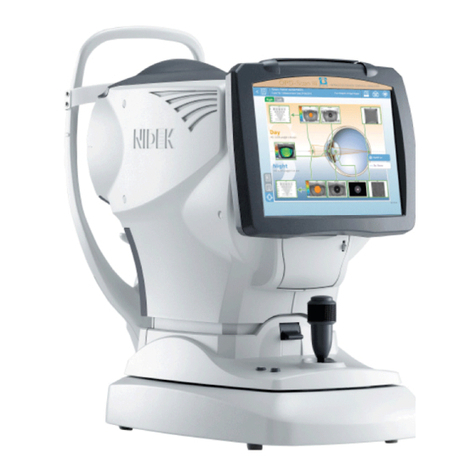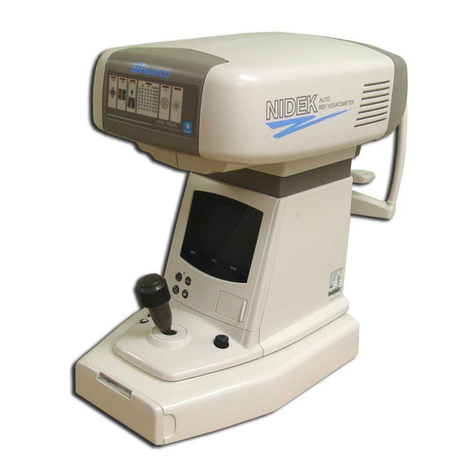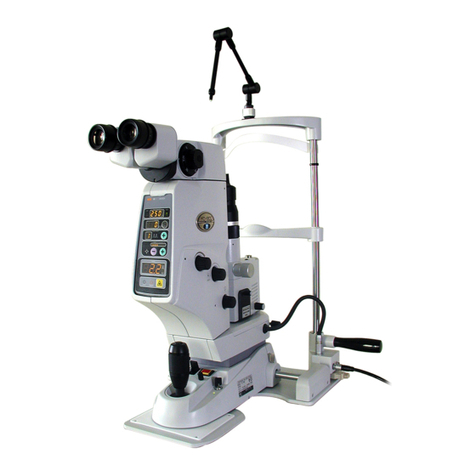
4
RS-232C Communication and USB Communication:Basic Interface Specifications
MLM26*RTZ002F
Type of Com mode
When the Com mode parameter is set to “NCP20”, set the following parameters.
USB Communication
Among the parameters related to communication, set the two parameters below: The other parame-
ters related to communication have no influence on the data exported through the USB interface.
* The underlined option shows the factory setting.
For the method of setting parameters, see “Setting Parameters” of the LM-1800P/LM-1800PD opera-
tor’s manual.
Off No communication
NIDEK Communication method with DSR/DTR
NIDEK2 Communication method with DSR/DTR (with longer time-out limit)
PC Communication method without DSR/DTR
NCP10 Communication method without DSR/DTR, only output of the
measurement result
NCP20 Communication method by command handshake without DSR/DTR
1 Source 0 to 255, factory setting: 1
2 Destination 0 to 255, factory setting: 0
3 Request 0.1 to 10.0 (seconds), factory setting: 2.0
4 Reception 1 to 100 (seconds), factory setting: 10
5 Response 0.1 to 10.0 (seconds), factory setting: 2.0
6 Re-request 0.1 to 10.0 (seconds), factory setting: 2.0
7 Retry 0 to 5 (times), factory setting: 3
• Addition of CR code
Set the CR code parameter to On when the communication software on the computer needs the
CR code to terminate the reception of the character strings. (BASIC language etc.)
The CR code is added to the data sent from the LM; For character strings sent from the computer,
whether the CR code is added or not does not matter.
• To enable communication with a computer, it is necessary to keep consistency in the
settings of communication parameters between the LM and computer.
Before data communication, also confirm the settings of the communication parameters on the
computer.
1 Communication specifications In accordance with the USB V2.0 specifications
(B-type connector on the LM)
2 Interface cable Standard USB cable (Shield type)
1 Com mode PC, NCP10, NCP20
The NIDEK option is unavailable in USB communication.
2 CR code Off, On










































